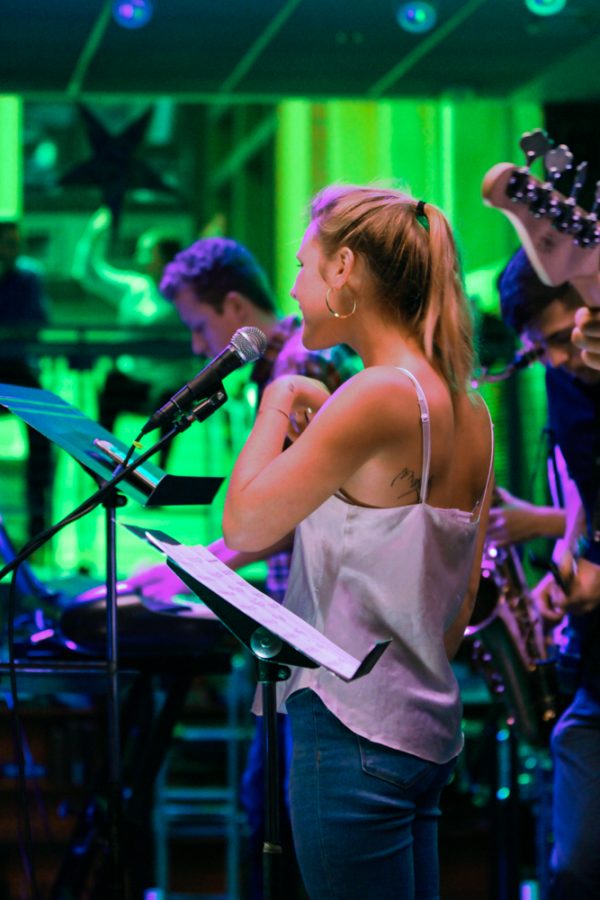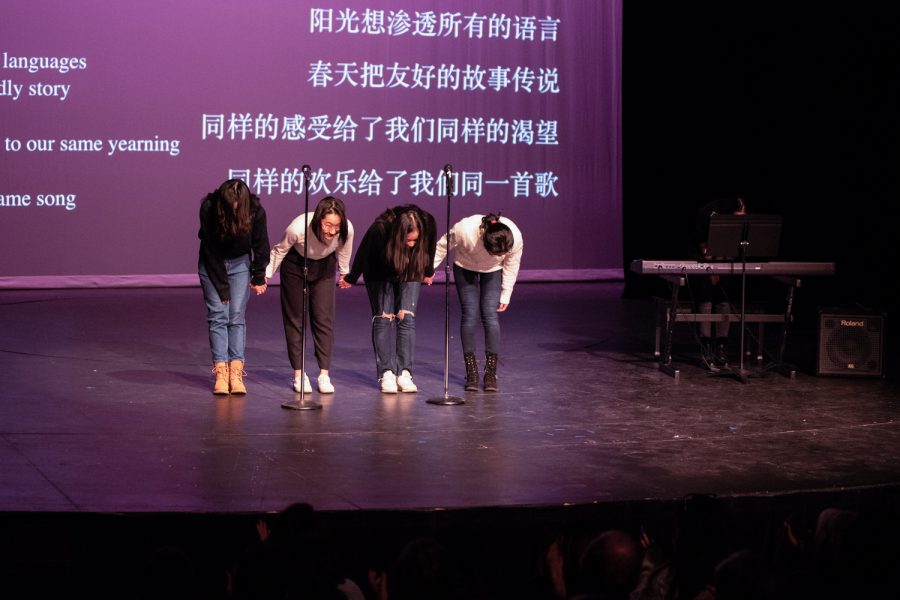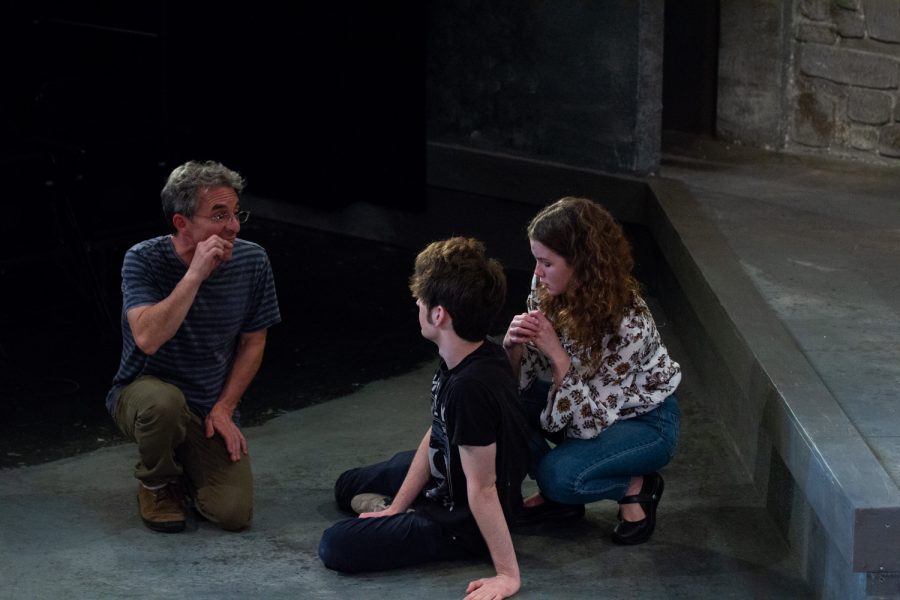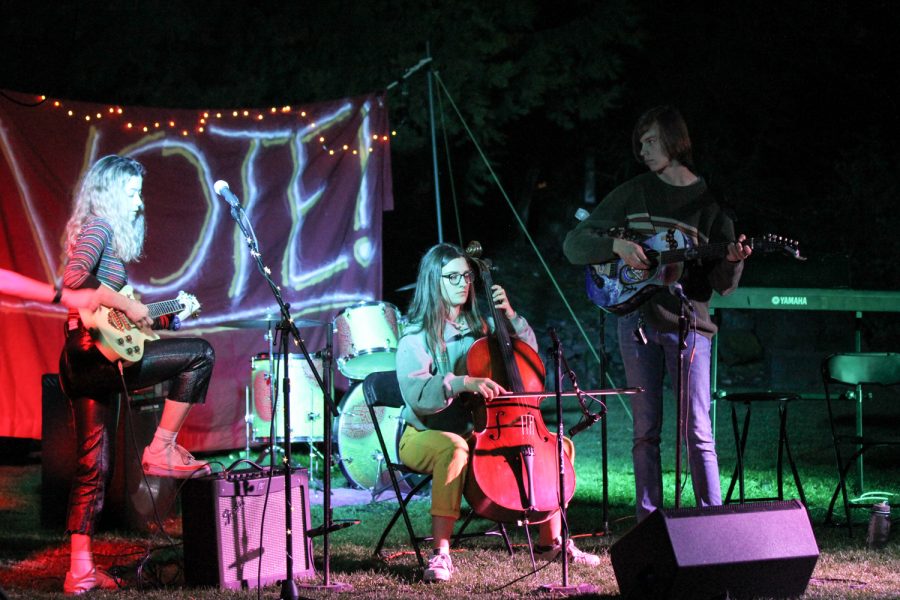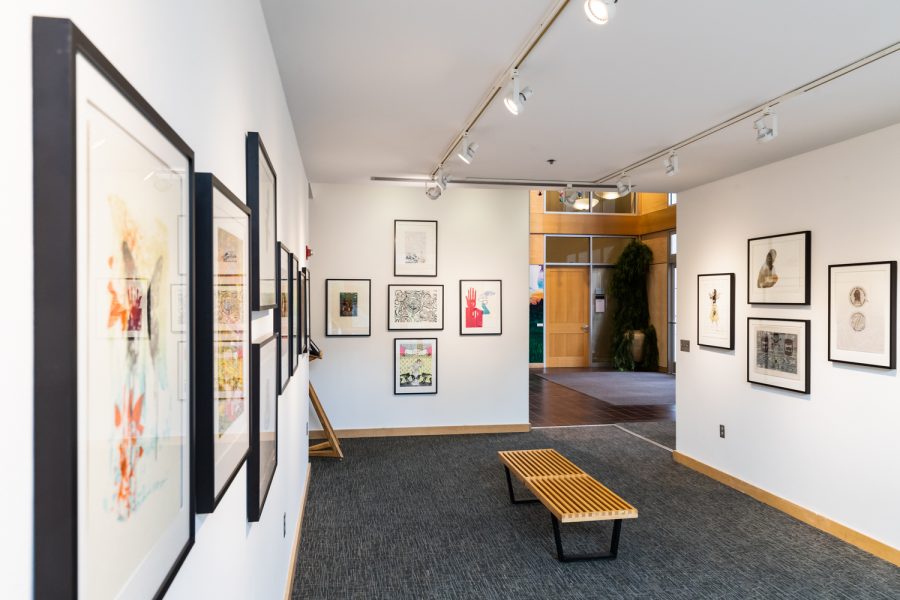“Actually Just Kind of and Almost,” the dance performance starting Dec. 11, reflects last year’s introduction of dance to the theatre department, and Harper Joy Theatre has begun introducing dance-based shows into their typically play-oriented season lineup.
“Seeing the dance production in our offerings at Harper Joy Theatre is a reflection of trying to make dance part of what we do here, so it’s all one thing,” said department chair Chris Petit.
Three choreographers will be contributing a total of five pieces, creating an hour-long show. Renée Archibald, the recently hired professor of dance, will be providing two of her older works along with a new collaboration with her students, and professor Peter de Grasse and guest artist David Thomson will each be providing a piece.
Archibald’s first piece was originally created in New York in 2003, her first official work as a choreographer. The piece incorporates speaking roles into the choreography. The second piece Archibald is contributing to the show is a light-hearted production created a few years ago during her time in graduate school. It examines the ideas of movement and motion in different contexts.
“It’s kind of meta, in a very short period of time it looks at the idea of moving West, and also this idea of the American dream, and also this idea of upward mobility through dance,” said Archibald.
Archibald’s final piece for the show is also her newest. She worked with her five Whitman students, one junior and four first-years, to examine the concept of disappearance.
“I’m working with the idea of disappearance, of presence and absence…the idea of the space or the energy between people being the thing of interest rather than the [performers] as objects,” said Archibald, “I’m trying to call attention to the negative space.”
While Archibald created the original concept for the dance, her students helped develop the idea through movement, writing, and discussion. The students wrote short explorations of the idea of disappearance, and some images that they created, such as growing fur and disappearing from humanity, provided subtext for the choreography.

“Sometimes I give them some ideas I’ve been working with and ask them to craft movement, and then we shape that movement and share it as a vocabulary,” said Archibald, “Other times I give them movement…where [I] improvise something short, and then [the students] have to make something from that.”
De Grasse’s piece, “Mantra in a Funky Key,” plays with the ideas of fragmentation, repetition and non-literal meaning. The choreography uses disjointed arrangement of movement to reflect the music of the piece, by hip-hop produce Sixtoo, as well as writing the students did in preparation for the performance.
“In one of the exercise for this piece, the performers wrote down semi-autobiographical anecdotes. They wrote the anecdotes to include elements of magic, so that the narrative of each one became fairy-tale-like in nature. The performers then took the anecdotes and fragmented them, so that they contained no complete sentences, so that their narrative logic was dismantled entirely. When memorized and spoken, the fragmented texts had an unexpectedly poetic quality. In rehearsals, the performers repeated the memorized texts ad infinitum, until the words took on an absurdity which in turn became meditative in nature, as would be the case with a mantra,” said de Grasse.
Thomson developed his piece over a short campus residency of around 2 weeks, collaborating with Whitman students. Guest artists like Thomson are brought on to relieve strain on the theatre and dance department, and outside collaborators are often seen in Harper Joy Theatre productions.
“We see areas in our curriculum that we can’t cover, there’s only five of us, we put on a lot of plays and productions, so we have the resources to bring in a number of guess artists each year…we identify the needs of the season and we use our resources to bring in guests,” said Petit, “Almost every production we do has a guest working on it.”
This support from the newly-merged department is a great benefit for “Actually Just Kind of and Almost” as well as all future dance programs. The resources to bring on guest artists, as well as organizational support, was absent from Whitman’s dance program in the past.
“Before the integration of the dance program and the Theatre Department, there was no program director, and it was up to the individual instructor and the dancers to design and create costumes, props, and find necessary volunteer support for things like stage management. There never would have been the opportunity to share a mixed bill with a guest artist like David Thomson,” said de Grasse.
For the future performances, Archibald is looking to expand collaborative efforts. She is currently organizing the Spring Studio Series, which will feature artists from campus, the community, and across the nation as they perform, answer questions, and engage in discussions with the audience and other contributors. Archibald is also planning to have three groups of students work with a dance professor and collaborate with a professor from a different department in order to explore the politics of gender, finally merging into one group for a performance.
“I’m working with the idea that the idea that performance makes something,” said Archibald.





